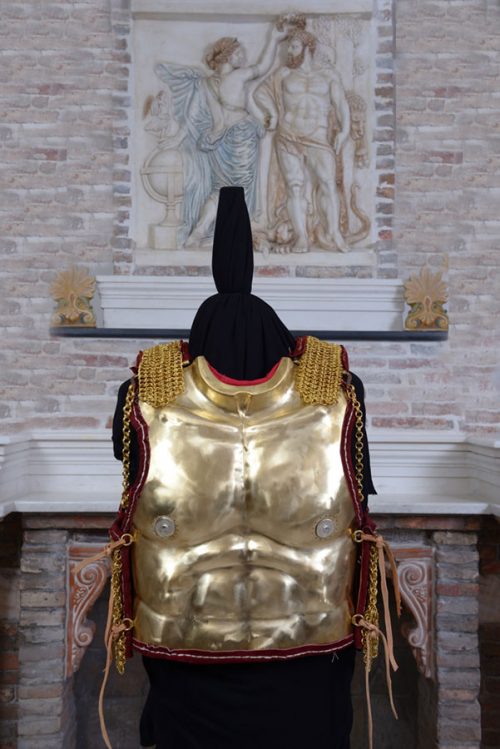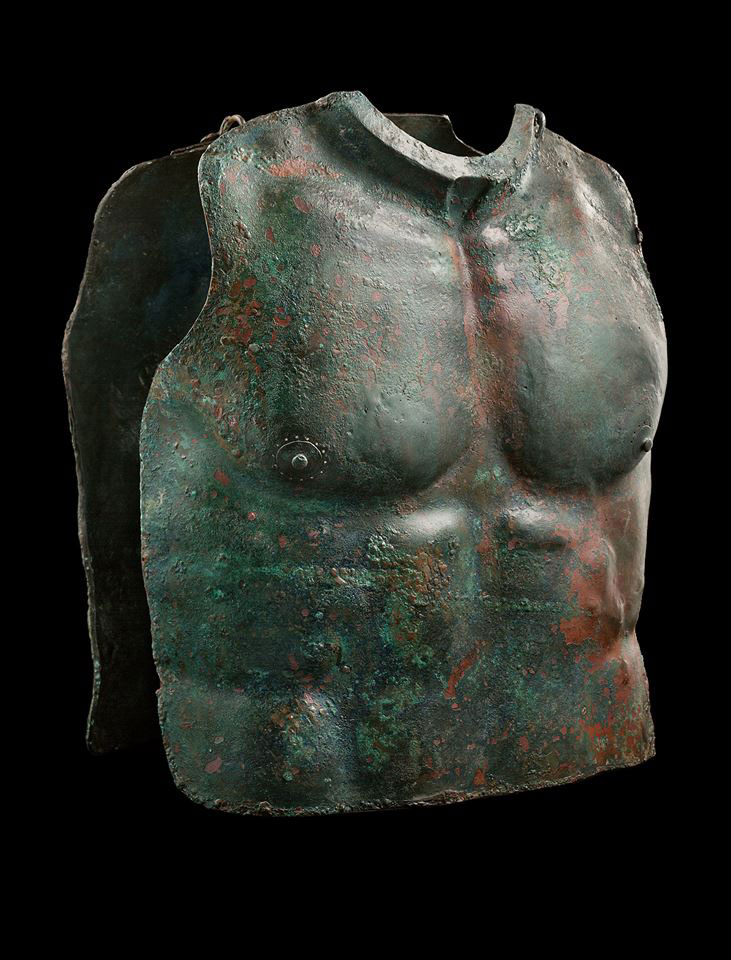Ancient Greek Armors
Italic muscle cuirass
4th century B.C

The numerous Greek colonies that flourished in Italy established what is known as the “Magna
Graecia” (Greater Greece), modern day Sicily, Calabria, Apulia, and Salento. These city colonies
were not just important trade centers but also halted the expansion of the Phoenicians from African
Carthage and were to prove very influential in determining the political, economic, social and
cultural make-up of Rome and, through the empire, Western Europe itself. The influence of Greek
military affairs in the Italian peninsula can be traced at least as far back as the 6th century BC, not
only in introducing hoplite tactics but also armaments and armour. The bronze muscle cuirass, for
instance, an indigenous Greek innovation was introduced to the Latins and remained in use among
the higher echelons of army officers long after it was abandoned by the Roman troops.
Many hybrids of the archetypal muscle cuirass were produced in Magna Graecia, with various
differences from the Classical Greek specifications in aesthetics or mode of usage. One of the most
popular variations was a shortened version of the muscled bronze torso consisting of a breast and a
back plate. A characteristic example is an archaeological find dating back to the 4th century BC and
displayed at the Phoenix Art Gallery. Such types of protection remained popular among the military
elites of the Latins for centuries.
Τhe reconstruction is based on this very example but with some extra structural additions in order to
make it fully functional. It is a hybrid muscle cuirass, short in length (absence of navel), consisting
of separate frontal and dorsal plates joined together by means of leather straps placed on the sides
the shoulders. It is these leather additions that are the major technical differences from the original
Classical typology. Classical Greek cuirasses always had the frontal and the rear plates joined
directly at the shoulder and lateral sides.
It bears a heavily athletic musculature, distinct pectoral muscles, abdominal muscles, oversize collar
bones, ribs and a characteristic raised neck defense which functioned as a collar throat guard. A pair
of silver cast and inset nipples have been riveted directly on the chest further promoting its artistic
individuality. No side or shoulder pieces have been found with this particular cuirass to secure the
two plates together, so thick leather straps, reinforced externally with bronze chain mail elements
(one of the possibilities) were added. Two pairs of ring fasteners on each side and one pair of hinges
on each shoulder secure the fastening of the torso. This specific open arrangement in combination
with the short length of the cuirass allows a great ease of movement, increases the necessary
flexibility and makes it an ideal stylized protection for elite hoplites.
It is worth mentioning that this kind of harness, even as late as the 2nd century, was called by the
Romans kardiophylax (Polybius VI.23), a Greek word, literally, ‘heart protector’. All the inner
surfaces have been lined with thick layers of wool and fabric. The various elements have numerous
lining holes along the perimeter for the handstiched purple leather folded over.





































